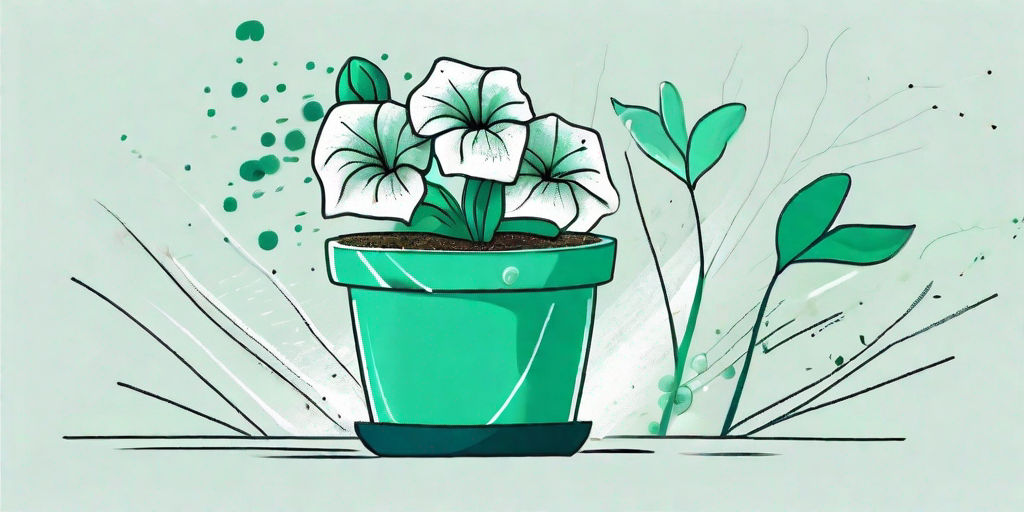
Petunias, the divas of the garden world, are renowned for their vibrant colors, delightful fragrance, and their ability to steal the limelight wherever they're planted. But, did you know that these showstoppers are surprisingly easy to grow from seed? Yes, you heard it right! With a little patience, a dash of tender loving care, and a sprinkle of cheeky humor, you can cultivate your own petunia paradise. So, let's dive into the world of petunias and unravel the secrets of growing them from seed.
The Petunia Basics
Before we delve into the nitty-gritty of petunia cultivation, let's get to know these divas a bit better. Petunias belong to the Solanaceae family, which also includes tomatoes, potatoes, and tobacco. Originating from South America, these perennials are grown as annuals in most parts of the world. They come in a kaleidoscope of colors, except for true blue, and are available in a variety of types, including grandiflora, multiflora, milliflora, and spreading (wave).
Now, you might be wondering, "Why should I grow petunias from seed?" Well, growing petunias from seed is not only cost-effective but also gives you a wider choice of varieties. Plus, it's a fun and rewarding experience. Imagine watching those tiny seeds transform into blooming beauties. It's like being a proud parent, but without the teenage tantrums.
Getting Started: The Seed Sowing Process
When to Sow
Timing is everything when it comes to sowing petunia seeds. The ideal time to start is 10 to 12 weeks before the last frost date in your area. This gives the seeds ample time to germinate and the seedlings to grow strong before they are transplanted outdoors.
Don't know when the last frost date is? Don't worry, there's no need to consult a crystal ball or perform a rain dance. Simply check the frost dates for your region online or consult your local extension service.
How to Sow
Now that you've got the timing down, let's move on to the sowing process. Start by filling a seed tray or pots with a good quality, well-draining seed compost. Sprinkle the petunia seeds on the surface, but don't cover them as they need light to germinate. Mist the seeds with water, place the tray in a clear plastic bag or cover with a plastic dome, and put it in a warm, bright place, but out of direct sunlight.
Patience is key here. Petunia seeds can take anywhere from 7 to 21 days to germinate. So, while you're waiting, why not take up a new hobby? Knitting, perhaps? Or, if you're feeling adventurous, how about learning to juggle?
Caring for Your Petunia Seedlings
Light and Temperature
Once your petunia seeds have germinated, they'll need plenty of light. A south-facing windowsill or a fluorescent light setup can do the trick. Keep the temperature around 65 to 75 degrees Fahrenheit during the day and about 60 degrees at night. Remember, petunias are divas, and divas like their comfort.
Rotate the seed tray regularly to ensure all seedlings get equal exposure to light. This prevents them from leaning in one direction, like sunflowers or fans at a rock concert.
Watering and Feeding
When it comes to watering, petunias prefer a 'less is more' approach. Keep the compost slightly moist, but not waterlogged. Overwatering can lead to damping off, a fungal disease that can wipe out your seedlings faster than a rabbit can devour a carrot.
Once the seedlings have developed their first true leaves, start feeding them with a half-strength liquid fertilizer every two weeks. It's like giving them a gourmet meal, minus the candlelight and soft music.
Transplanting and Aftercare
When the danger of frost has passed and the seedlings have at least three true leaves, it's time to transplant them outdoors. Choose a sunny spot with well-draining soil and space the plants about 10 to 12 inches apart.
Water the transplants regularly, feed with a balanced fertilizer every two weeks, and deadhead spent flowers to encourage more blooms. With the right care, your petunias will put on a spectacular show all summer long, making you the envy of your neighbors.
Frequently Asked Questions
-
Why are my petunia seedlings leggy?
Leggy seedlings are usually a sign of insufficient light. Move your seedlings to a brighter location or use artificial lights to provide the necessary light intensity.
-
Can I save petunia seeds for next year?
Absolutely! You can collect seeds from mature petunia flowers and store them in a cool, dry place for next year. Just remember to label the packets, unless you fancy a surprise in your garden next year.
-
Do petunias attract pests?
Like all plants, petunias can attract certain pests, such as aphids and slugs. Regular inspection and early intervention can keep these pests in check.
Conclusion
So, there you have it, folks! The A to Z of growing petunias from seed. It's not rocket science, but it does require a bit of patience, care, and a sense of humor. But, trust us, the end result is well worth the effort. So, roll up your sleeves, put on your gardening gloves, and let's get sowing!
Remember, every garden needs a diva, and petunias are ready to take center stage. So, why not give them a chance to shine? After all, life's too short for boring gardens!















